Discover 11 hidden attractions, cool sights, and unusual things to do in Ridgefield (United States). Don't miss out on these must-see attractions: Keeler Tavern, The Aldrich Contemporary Art Museum, and Ridgebury Congregational Church. Also, be sure to include Ridgefield Center Historic District in your itinerary.
Below, you can find the list of the most amazing places you should visit in Ridgefield (Connecticut).
Table of Contents
Keeler Tavern

Museum in Ridgefield, Connecticut. The Keeler Tavern is an 18th-century historical building at 132 Main Street in the center of Ridgefield, Connecticut, United States. The property served as summer home to architect Cass Gilbert, who purchased it in 1907 and designed additions to the building as well as a garden.
It is also significant for the part it played in the Ridgefield action when British forces passed through, in 1777. The site was placed on the National Register of Historic Places in 1982 and is operated as the Keeler Tavern Museum. It is also included in the Ridgefield Center Historic District, NRHP-listed in 1984.[1]
Address: 132 Main St, 06877-4931 Ridgefield
The Aldrich Contemporary Art Museum

Museum in Ridgefield, Connecticut. The Aldrich Contemporary Art Museum is located in Ridgefield, Connecticut. The Aldrich has no permanent collection and is the only museum in Connecticut that is dedicated solely to the exhibition of contemporary art. The museum presents the first solo museum exhibitions by emerging artists, significant exhibitions of established and mid-career artists whose work is under recognized, thematic group exhibitions exploring topics in contemporary art and society, and newly commissioned work.[2]
Address: 258 Main St, 06877 Ridgefield
Ridgebury Congregational Church

United church of christ in Ridgefield, Connecticut. The Ridgebury Congregational Church is a historic church in the Ridgebury section of Ridgefield, Connecticut. Founded in 1760, it is a member church of the United Church of Christ. It is a small wood frame Greek Revival structure, built about 1851 on an older foundation. Its main facade has a single centered entrance, flanked by tall windows. The entry is framed by pilasters and an entablature with cornice. The building's corners are also pilastered, with an entablature extending around the building below the roof line. A two-stage square tower rises above the entrance, topped with a parapet and pinnacles at the corners.
The building was listed on the National Register of Historic Places in 1984.[3]
Address: 605 Ridgebury Rd, 06877-1111 Ridgefield
Ridgefield Center Historic District
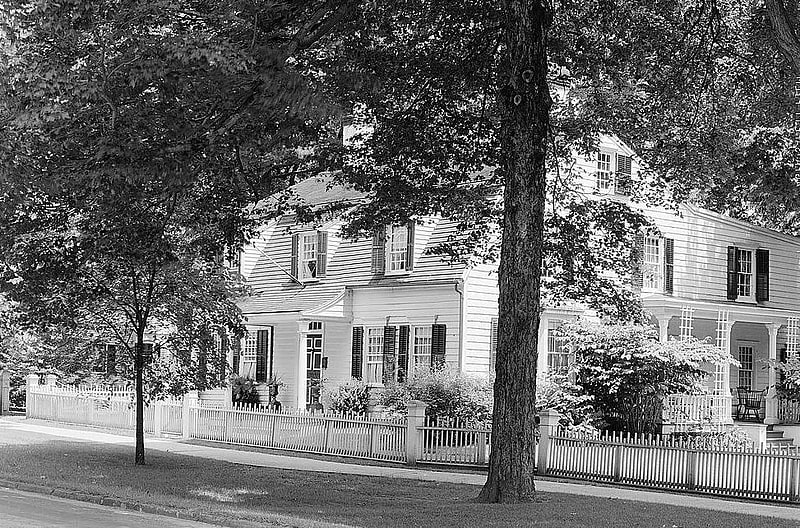
The Ridgefield Center Historic District is part of the town of Ridgefield, Connecticut. It was listed on the National Register of Historic Places in 1984.
The district is an irregularly shaped area that is roughly bounded by Pound St. Fairview Ave. Prospect, Ridge, and Whipstick Rds. In 1984 it included 241 contributing buildings and one other contributing structure, over a 395 acres (160 ha) area.
Two properties, the Phineas Chapman Lounsbury House (now a community center) and the Keeler Tavern (purchased and renovated by architect Cass Gilbert and now a museum), were already separately listed in the National Register.
Other significant properties include:
- the Reverend Thomas Hawley House, c.1715
- the Nathan Scott House, at 5 Catoonah Street, which was moved there in 1922
- the former Episcopal Rectory, from 1790, which was moved to 23 Catoonah Street
- the Benedict House, c. 1790
- E. P. Dutton House
- Elizabeth W. Morris Memorial Building, which at the time of NRHP listing was home of the Ridgefield Library and Historical Association
- Maynard House, at 2 Peaceable Street, a c.1900 Neo-Georgian building locally believed to be designed by McKim, Meade & White
- 14 Barry Avenue, c. 1740, a Colonial house with early 20th-century Colonial Revival additions
Garden of Ideas

Body of water, Nature and wildlife, Garden, Park, Relax in park
Address: 653 N Salem Rd, 06877-1732 Ridgefield
Branchville Railroad Tenement
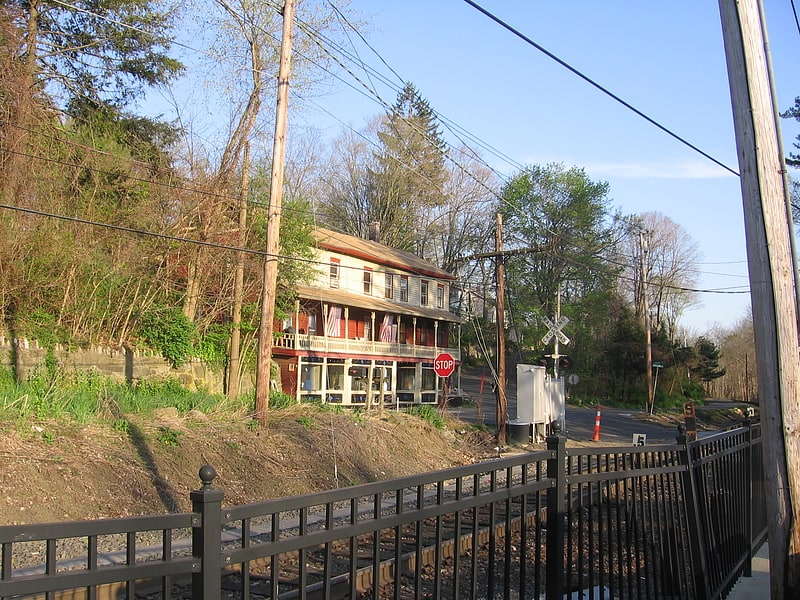
The Branchville Railroad Tenement is a historic commercial and residential building at the junction of Portland Avenue and West Branchville Road in Ridgefield, Connecticut. Built in stages between about 1853 and 1905, it is a distinctive reminder of the area's railroad-related history, serving as tenement housing for railroad workers before being converted to other residential and commercial uses. The building was listed on the National Register of Historic Places on August 12, 1982. It continues to be used for commercial and residential purposes.[5]
Phineas Chapman Lounsbury House
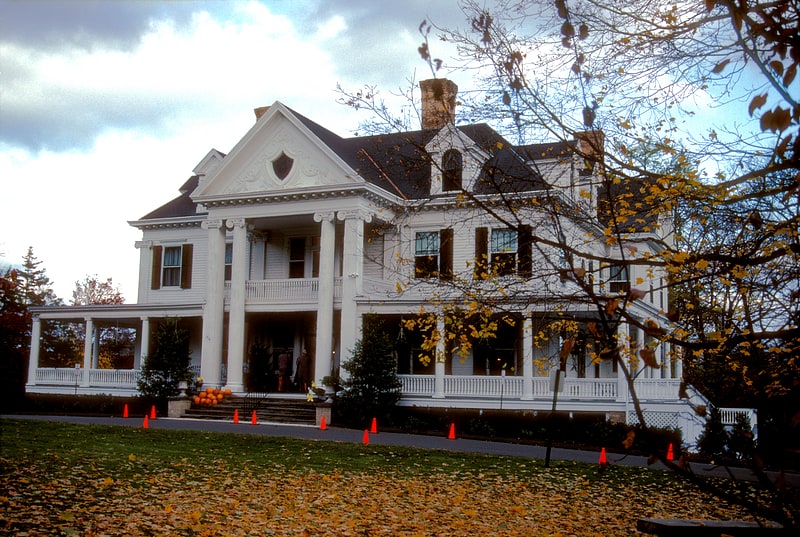
Building in Ridgefield, Connecticut. Lounsbury House, formerly known as Grovelawn and as the Ridgefield Veterans Memorial Community Center, is a historic house at 316 Main Street in Ridgefield, Connecticut. It is a two-story wood frame Classical Revival-style building that was built in 1895. Its design, by Charles Northrop, was an emulation of the Connecticut State Building exhibited at the 1893 Columbian Exposition, at the request of Governor Phineas C. Lounsbury, who attended the exhibition. It served as his family home. Lounsbury died in 1925, and his heirs gave the house to the town in 1945. The House and classic gardens now serve as a venue for weddings, corporate meetings, art gatherings, festivals and special events.
The building was listed on the National Register of Historic Places in 1975.[6]
Benedict House and Shop
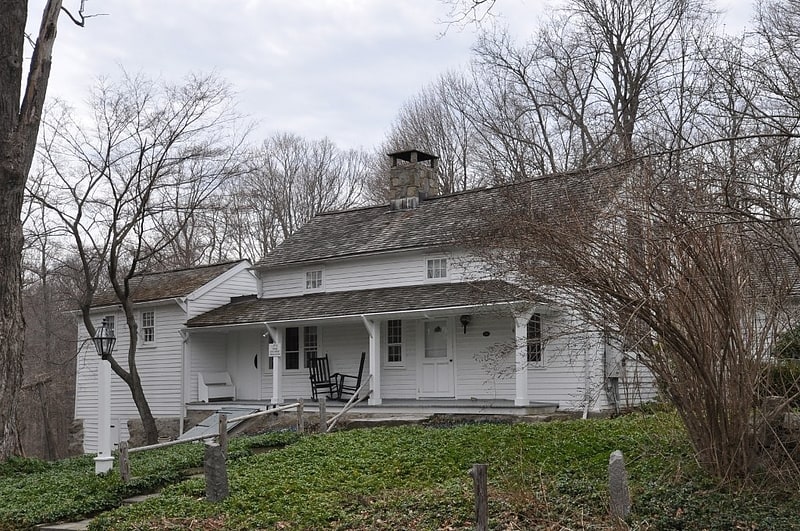
Building in Ridgefield. The Benedict House and Shop is a historic property at 57 Rockwell Road in Ridgefield, Connecticut. Built in 1740, the connected house and shop are among the oldest surviving buildings in the community. The shop is a particularly rare example of a cobbler's workshop of the 19th century. They are further notable for the sympathetic restoration they underwent at the hands of architect Cass Gilbert. The property was added to the National Register of Historic Places on December 4, 1998.[7]
Lewis June House

The Lewis June House, also known as the Scott House, is a historic house at 478 North Salem Road in Ridgefield, Connecticut, USA. Built c. 1865, it is one of a small number of Second Empire houses in Ridgefield, and its best-preserved and most elaborate example of the style. The house was listed on the National Register of Historic Places in 1984.[8]
Thomas Hyatt House
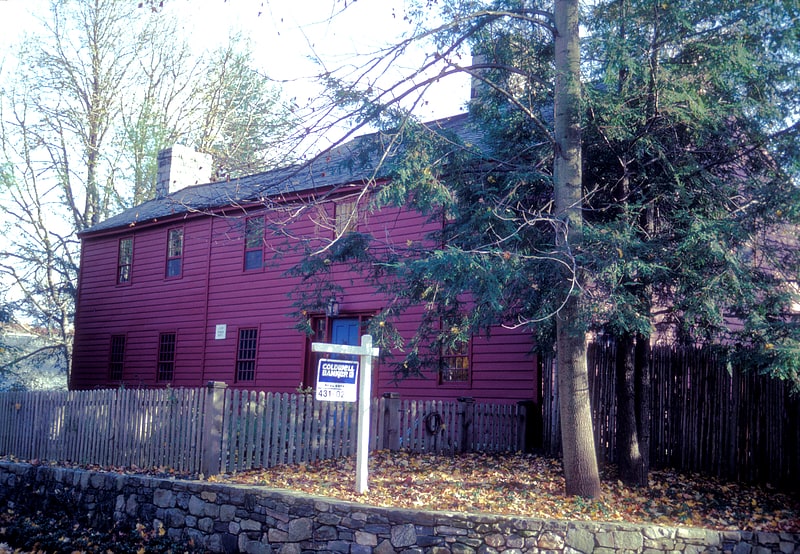
Building in Ridgefield. The Thomas Hyatt House, also known as the Cashman House, is a Colonial style house at 11 Barlow Mountain Road in Ridgefield, Connecticut. Built about 1735, it is one of the community's oldest and best-preserved houses, retaining much of its original layout and features. It was listed on the National Register of Historic Places in 1984.[9]
Frederic Remington House
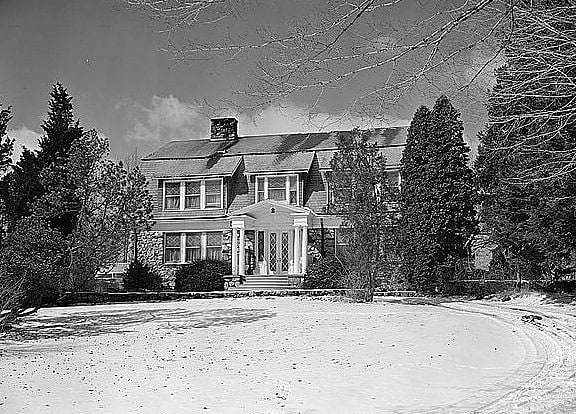
The Frederic Remington House is a historic house at 36 Oak Knoll Road in Ridgefield, Connecticut. A National Historic Landmark, it was the home of the painter and sculptor Frederic Remington in the last few months of his life. Remington and his wife designed the two-story gambrel-roofed, fieldstone-and-shingle house. He produced some of his finest work in the house including the sculpture "The Stampede" and the painting "The Love Call". The house was declared a National Historic Landmark in 1965.[10]